Andrew Bai
Exploring Expert Failures Improves LLM Agent Tuning
Apr 18, 2025Abstract:Large Language Models (LLMs) have shown tremendous potential as agents, excelling at tasks that require multiple rounds of reasoning and interactions. Rejection Sampling Fine-Tuning (RFT) has emerged as an effective method for finetuning LLMs as agents: it first imitates expert-generated successful trajectories and further improves agentic skills through iterative fine-tuning on successful, self-generated trajectories. However, since the expert (e.g., GPT-4) succeeds primarily on simpler subtasks and RFT inherently favors simpler scenarios, many complex subtasks remain unsolved and persistently out-of-distribution (OOD). Upon investigating these challenging subtasks, we discovered that previously failed expert trajectories can often provide valuable guidance, e.g., plans and key actions, that can significantly improve agent exploration efficiency and acquisition of critical skills. Motivated by these observations, we propose Exploring Expert Failures (EEF), which identifies beneficial actions from failed expert trajectories and integrates them into the training dataset. Potentially harmful actions are meticulously excluded to prevent contamination of the model learning process. By leveraging the beneficial actions in expert failures, EEF successfully solves some previously unsolvable subtasks and improves agent tuning performance. Remarkably, our approach achieved a 62\% win rate in WebShop, outperforming RFT (53. 6\%) and GPT-4 (35. 6\%), and to the best of our knowledge, setting a new state-of-the-art as the first method to surpass a score of 0.81 in WebShop and exceed 81 in SciWorld.
On the loss of context-awareness in general instruction fine-tuning
Nov 05, 2024Abstract:Pretrained Large Language Models (LLMs) require post-training methods such as supervised fine-tuning (SFT) on instruction-response pairs to enable instruction following. However, this process can potentially harm existing capabilities learned during pretraining. In this paper, we investigate the loss of context awareness after SFT, defined as the capability to extract and understand information from the user-provided context and respond accordingly. We are the first to identify and show that the loss of context-awareness appears on instruction-finetuned LLMs when the chat template is applied to the input prompts. We identify the performance decline is partially caused by the bias embedded into the chat template to focus less on the user-provided context. Based on these observations, we propose two methods to mitigate the loss of context awareness in instruct models: post-hoc attention steering on user prompts and conditional instruction fine-tuning with a context-dependency indicator. Empirical experiments on 4 context-dependent downstream tasks and 3 pretrained LLMs of different sizes show that our methods effectively mitigates the loss of context awareness without compromising the general ability to follow instructions. Our findings also strongly advocate the necessity to carefully benchmark context awareness after instruction fine-tuning.
CLUE: Concept-Level Uncertainty Estimation for Large Language Models
Sep 04, 2024Abstract:Large Language Models (LLMs) have demonstrated remarkable proficiency in various natural language generation (NLG) tasks. Previous studies suggest that LLMs' generation process involves uncertainty. However, existing approaches to uncertainty estimation mainly focus on sequence-level uncertainty, overlooking individual pieces of information within sequences. These methods fall short in separately assessing the uncertainty of each component in a sequence. In response, we propose a novel framework for Concept-Level Uncertainty Estimation (CLUE) for LLMs. We leverage LLMs to convert output sequences into concept-level representations, breaking down sequences into individual concepts and measuring the uncertainty of each concept separately. We conduct experiments to demonstrate that CLUE can provide more interpretable uncertainty estimation results compared with sentence-level uncertainty, and could be a useful tool for various tasks such as hallucination detection and story generation.
Embedding Space Selection for Detecting Memorization and Fingerprinting in Generative Models
Jul 30, 2024Abstract:In the rapidly evolving landscape of artificial intelligence, generative models such as Generative Adversarial Networks (GANs) and Diffusion Models have become cornerstone technologies, driving innovation in diverse fields from art creation to healthcare. Despite their potential, these models face the significant challenge of data memorization, which poses risks to privacy and the integrity of generated content. Among various metrics of memorization detection, our study delves into the memorization scores calculated from encoder layer embeddings, which involves measuring distances between samples in the embedding spaces. Particularly, we find that the memorization scores calculated from layer embeddings of Vision Transformers (ViTs) show an notable trend - the latter (deeper) the layer, the less the memorization measured. It has been found that the memorization scores from the early layers' embeddings are more sensitive to low-level memorization (e.g. colors and simple patterns for an image), while those from the latter layers are more sensitive to high-level memorization (e.g. semantic meaning of an image). We also observe that, for a specific model architecture, its degree of memorization on different levels of information is unique. It can be viewed as an inherent property of the architecture. Building upon this insight, we introduce a unique fingerprinting methodology. This method capitalizes on the unique distributions of the memorization score across different layers of ViTs, providing a novel approach to identifying models involved in generating deepfakes and malicious content. Our approach demonstrates a marked 30% enhancement in identification accuracy over existing baseline methods, offering a more effective tool for combating digital misinformation.
Defending LLMs against Jailbreaking Attacks via Backtranslation
Feb 28, 2024Abstract:Although many large language models (LLMs) have been trained to refuse harmful requests, they are still vulnerable to jailbreaking attacks, which rewrite the original prompt to conceal its harmful intent. In this paper, we propose a new method for defending LLMs against jailbreaking attacks by ``backtranslation''. Specifically, given an initial response generated by the target LLM from an input prompt, our backtranslation prompts a language model to infer an input prompt that can lead to the response. The inferred prompt is called the backtranslated prompt which tends to reveal the actual intent of the original prompt, since it is generated based on the LLM's response and is not directly manipulated by the attacker. We then run the target LLM again on the backtranslated prompt, and we refuse the original prompt if the model refuses the backtranslated prompt. We explain that the proposed defense provides several benefits on its effectiveness and efficiency. We empirically demonstrate that our defense significantly outperforms the baselines, in the cases that are hard for the baselines, and our defense also has little impact on the generation quality for benign input prompts.
Which Pretrain Samples to Rehearse when Finetuning Pretrained Models?
Feb 12, 2024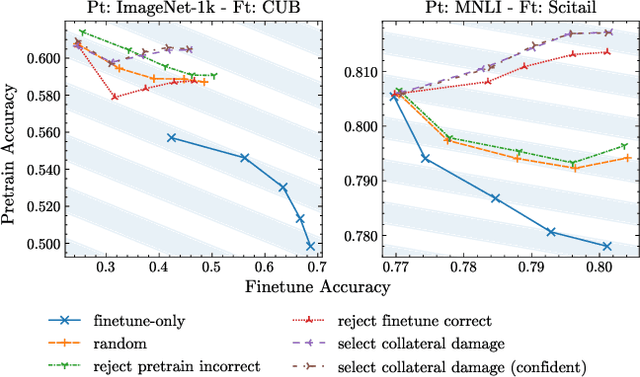
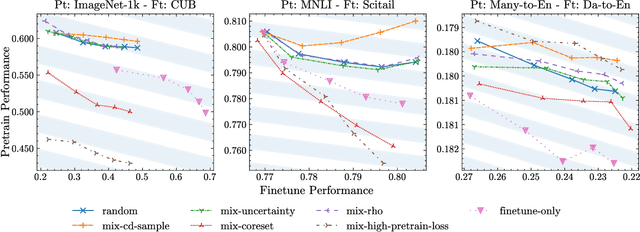

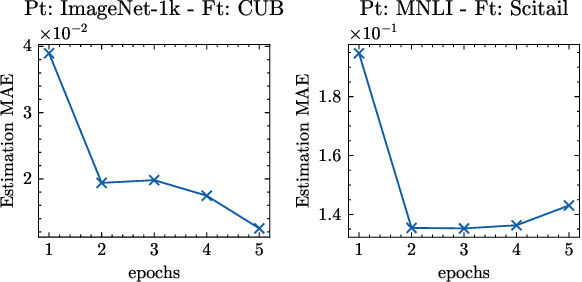
Abstract:Fine-tuning pretrained foundational models on specific tasks is now the de facto approach for text and vision tasks. A known pitfall of this approach is the forgetting of pretraining knowledge that happens during finetuning. Rehearsing samples randomly from the pretrain dataset is a common approach to alleviate such forgetting. However, we find that random mixing unintentionally includes samples which are not (yet) forgotten or unlearnable by the model. We propose a novel sampling scheme, mix-cd, that identifies and prioritizes samples that actually face forgetting, which we call collateral damage. Since directly identifying collateral damage samples is computationally expensive, we propose a procedure to estimate the distribution of such samples by tracking the statistics of finetuned samples. Our approach is lightweight, easy to implement, and can be seamlessly integrated into existing models, offering an effective means to retain pretrain performance without additional computational costs.
Data Attribution for Diffusion Models: Timestep-induced Bias in Influence Estimation
Jan 21, 2024Abstract:Data attribution methods trace model behavior back to its training dataset, offering an effective approach to better understand ''black-box'' neural networks. While prior research has established quantifiable links between model output and training data in diverse settings, interpreting diffusion model outputs in relation to training samples remains underexplored. In particular, diffusion models operate over a sequence of timesteps instead of instantaneous input-output relationships in previous contexts, posing a significant challenge to extend existing frameworks to diffusion models directly. Notably, we present Diffusion-TracIn that incorporates this temporal dynamics and observe that samples' loss gradient norms are highly dependent on timestep. This trend leads to a prominent bias in influence estimation, and is particularly noticeable for samples trained on large-norm-inducing timesteps, causing them to be generally influential. To mitigate this effect, we introduce Diffusion-ReTrac as a re-normalized adaptation that enables the retrieval of training samples more targeted to the test sample of interest, facilitating a localized measurement of influence and considerably more intuitive visualization. We demonstrate the efficacy of our approach through various evaluation metrics and auxiliary tasks, reducing the amount of generally influential samples to $\frac{1}{3}$ of its original quantity.
Concept Gradient: Concept-based Interpretation Without Linear Assumption
Aug 31, 2022
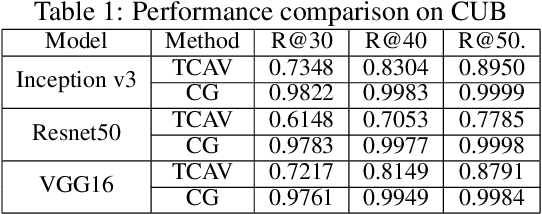
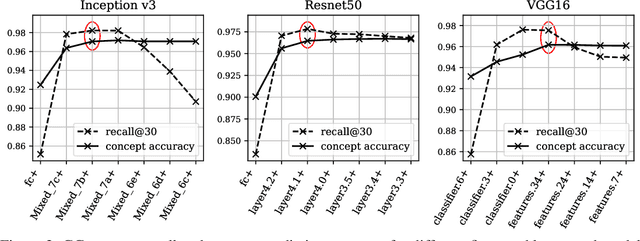

Abstract:Concept-based interpretations of black-box models are often more intuitive for humans to understand. The most widely adopted approach for concept-based interpretation is Concept Activation Vector (CAV). CAV relies on learning a linear relation between some latent representation of a given model and concepts. The linear separability is usually implicitly assumed but does not hold true in general. In this work, we started from the original intent of concept-based interpretation and proposed Concept Gradient (CG), extending concept-based interpretation beyond linear concept functions. We showed that for a general (potentially non-linear) concept, we can mathematically evaluate how a small change of concept affecting the model's prediction, which leads to an extension of gradient-based interpretation to the concept space. We demonstrated empirically that CG outperforms CAV in both toy examples and real world datasets.
 Add to Chrome
Add to Chrome Add to Firefox
Add to Firefox Add to Edge
Add to Edge